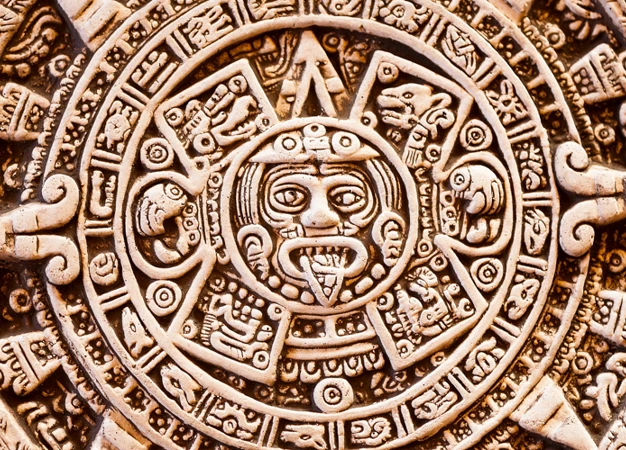The Mayans, an ancient civilization that thrived in Mesoamerica from around 2000 BCE to 1500 CE, were known for their advanced knowledge of astronomy. Decoding the astronomical knowledge of the Mayans is a fascinating journey that reveals their deep connection with the cosmos. Through intricate observations, the Mayans developed calendars, constructed ancient structures aligned with celestial bodies, and left behind symbols and artifacts that hold hidden wisdom. In this article, we delve into the world of Mayan astronomy, uncovering the secrets of their lunar cycles, planetary movements, solar observations, and the intricate relationship between astronomy and their calendars. Join us as we decipher Mayan symbols and explore the beliefs of this ancient civilization, all while uncovering modern interpretations and discoveries that shed further light on the astronomical knowledge of the Mayans.
Contents
- Mayan Astronomy
- Astronomical Observations
- Astronomy and the Mayan Calendar
- Astronomy and Ancient Mayan Structures
- Deciphering Mayan Symbols and Artifacts
- Mayan Beliefs and the Cosmos
- Modern Interpretations and Discoveries
- Conclusion
-
Frequently Asked Questions
- What instruments did the Mayans use for astronomical observations?
- How did the Mayans predict celestial events?
- What significance did the lunar cycle hold for the Mayans?
- Why were the Mayan pyramids aligned with celestial bodies?
- How were the Mayan calendars used in their society?
- What was the purpose of the Long Count Calendar?
- What was the role of astrology in Mayan culture?
- What do Mayan symbols and artifacts reveal about their astronomical knowledge?
- What modern discoveries have furthered our understanding of Mayan astronomy?
- How does the Mayans’ astronomical knowledge compare to modern astronomy?
- References
-
Frequently Asked Questions
- 1. How did the Mayans observe astronomical events without modern technology?
- 2. What were the main astronomical observations made by the Mayans?
- 3. How did the Mayan calendar incorporate astronomy?
- 4. Were Mayan structures aligned with celestial bodies?
- 5. What was the purpose of the El Caracol Observatory?
- 6. How did the Mayans depict star maps and constellations?
- 7. Did the Mayans believe in astrology?
- 8. Have there been any modern interpretations or discoveries related to Mayan astronomy?
- 9. How does Mayan astronomy compare to other ancient civilizations?
- 10. What is the significance of Mayan astronomical knowledge in modern times?
- References
- Read More
Mayan Astronomy

Mayan astronomy was a complex and highly advanced system that played a central role in the cultural and religious practices of the Mayan civilization. The Mayans observed the night sky with great precision and developed a deep understanding of celestial movements. Their astronomical knowledge encompassed various aspects, including the lunar cycle, planetary movements, and solar observations.
Lunar Cycle: The Mayans carefully tracked the phases of the moon, recognizing its influence on aspects of their daily lives. They observed the moon’s waxing and waning, understanding that it took approximately 29.5 days for the moon to complete a full cycle.
Planetary Movements: In addition to the moon, the Mayans also closely monitored the movements of the planets. They recognized the recurring patterns and developed calendars based on the alignments of these celestial bodies. They believed that the planets held significant meaning and contributed to the spiritual and cultural aspects of their society.
Solar Observations: The Mayans had a profound understanding of the Sun and its movements. They accurately determined the length of the solar year which is approximately 365.2422 days, remarkably close to the modern calculation. The Mayan astronomical system incorporated precise measurements of solstices, equinoxes, and the transit of the Sun across specific landmarks.
The Mayans’ astronomical knowledge was not only instrumental in their understanding of the cosmos but also had a direct impact on their calendars, structures, and beliefs. Through meticulous observations and calculations, the Mayans were able to create calendars that synchronized with astronomical events, allowing them to predict celestial phenomena and organize important religious and agricultural activities. This intersection between astronomy and Mayan culture is evident in their calendars, such as the Long Count Calendar, the Haab Calendar, and the Tzolk’in Calendar, each serving specific purposes and aligning with different aspects of celestial movements.
Understanding the intricate relationship between Mayan astronomy and their ancient structures is also important. Many Mayan pyramids and temples were intentionally aligned with specific celestial bodies. This alignment not only showcased their sophisticated knowledge of astronomy but is also believed to have had religious and spiritual significance. Notable examples include the alignment of the Temple of Kukulkan at Chichen Itza with the spring and autumn equinoxes, showcasing the Mayans’ ability to accurately mark significant celestial events.
Decoding Mayan symbols and artifacts also provides valuable insights into their astronomical knowledge. Mayan art often depicted star maps and constellations, showcasing their understanding of the night sky. These depictions were not only for artistic purposes but also served as a way to communicate celestial events and their meanings. Additionally, astrology held significance in Mayan culture, with certain constellations and celestial events believed to influence human behavior and destiny.
The Mayans’ beliefs surrounding the cosmos were deeply intertwined with their everyday lives. They believed that the movements of celestial bodies directly influenced their agricultural cycles, planting seasons, and even the fate of individuals. This belief system created a strong connection between the Mayans and the celestial realms, shaping their spiritual practices and cultural traditions.
Modern interpretations and discoveries continue to shed light on the astronomical knowledge of the Mayans. Archaeological findings and advancements in scientific research allow us to better understand their observations and the significance they placed on celestial events. Scholars and astronomers continue to unravel the complexities of Mayan astronomy, providing us with a richer understanding of this ancient civilization’s profound relationship with the cosmos.
Continue reading to explore the intriguing world of Mayan astronomy and its impact on ancient Mayan civilization. Next, we delve into the Mayan calendars, including the Long Count Calendar, the Haab Calendar, and the Tzolk’in Calendar, highlighting how these calendars were intricately connected to the celestial movements and events that the Mayans meticulously observed and recorded.
Astronomical Observations
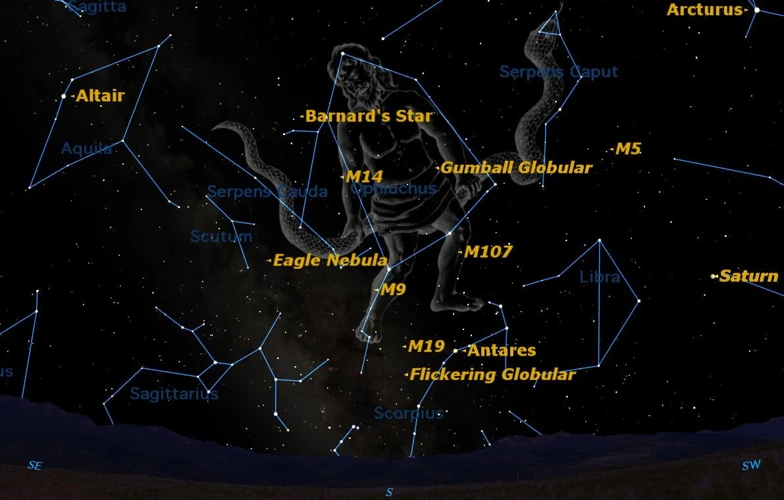
The Mayans possessed a deep understanding of celestial phenomena, and their astronomical observations played a pivotal role in their society. Their keen observations of the night sky allowed them to track the lunar cycle, planetary movements, and solar observations. The Mayans meticulously studied the phases of the moon, recognizing its impact on their daily lives and integrating it into their calendars. They closely monitored the movements of the planets, attributing significant meaning to their alignments and incorporating them into their spiritual and cultural practices. The Mayans also had a profound understanding of the Sun, accurately determining the length of the solar year. Their astronomical knowledge was not only reflected in their calendars and structures but was also captured in their art, which depicted star maps, constellations, and celestial events. The Mayans believed that the cosmos had a direct influence on their lives, shaping their agricultural cycles, individual destinies, and spiritual beliefs. By unraveling their astronomical observations, we gain valuable insights into the Mayans’ sophisticated understanding of the cosmos and its profound impact on their civilization.
Lunar Cycle
The Mayans possessed a profound understanding of the lunar cycle, recognizing its significance in their daily lives and cultural practices. They meticulously observed the phases of the moon and tracked its patterns over time. The Mayans understood that the lunar cycle, which stretches over approximately 29.5 days, played a crucial role in various aspects of their society.
The lunar cycle held immense importance for the Mayans’ agricultural practices, as they believed that the moon influenced the growth and development of crops. They utilized its phases to determine optimal planting and harvesting times, aligning their activities with the lunar calendar. By closely monitoring the moon’s waxing and waning, the Mayans could accurately predict the best time for agricultural tasks, ensuring successful harvests and bountiful yields.
In addition to its agricultural significance, the lunar cycle was intricately connected to the Mayans’ religious and spiritual beliefs. The Mayans associated specific deities and celestial forces with different phases of the moon. They believed that these deities influenced human behavior, emotions, and destinies. As a result, the Mayans carefully observed the moon’s phases to understand and interpret the impact of these celestial forces on their lives.
The Mayans incorporated the lunar cycle into their calendars. Their lunar calendar, known as the Tzolk’in, consisted of 260 days and was based on the combination of 13 numbers (representing the 13 phases of the moon) and 20 day signs. This unique calendar not only helped track the lunar cycle but also played a fundamental role in scheduling religious ceremonies, rituals, and important social events.
The Mayans’ understanding of the lunar cycle is a testament to their sophisticated astronomical knowledge. Their ability to track and interpret the moon’s phases demonstrates their keen observation skills and their awareness of the interconnectedness between celestial events and earthly activities.
To learn more about how the Mayans incorporated astronomy into their calendars, continue reading about the Long Count Calendar, the Haab Calendar, and the Tzolk’in Calendar. These calendars provide further insight into the Mayans’ intricate relationship with celestial bodies and their deep understanding of timekeeping and cosmic cycles.
Planetary Movements
The Mayans possessed a deep understanding of planetary movements and recognized the significance of these celestial bodies in their astronomical observations. They studied the movements of the planets, including Venus, Mars, Jupiter, and Mercury, and noted their recurring patterns and alignments with other celestial events. The Mayans believed that each planet held spiritual and cultural significance, influencing various aspects of their society.
Venus: Venus, known as the Morning Star or Evening Star, played a crucial role in Mayan astronomy. The Mayans closely observed the cycles of Venus and recorded its positions in the sky. They associated Venus with warfare and believed that its movements could influence the outcomes of battles. Venus was also linked to agricultural fertility and was considered a symbol of supernatural power.
Mars: The planet Mars held significance for the Mayans as the celestial embodiment of war and conflict. They closely monitored its movements and believed that the positions and alignments of Mars could foretell periods of strife and warfare. Mars was associated with their warrior deities and was believed to exert a powerful influence over human affairs.
Jupiter: Jupiter, the largest planet in our solar system, held tremendous significance for the Mayans. They observed Jupiter’s cycles and its positions in relation to other celestial bodies. Jupiter represented power, leadership, and divine rulership in Mayan culture. It was associated with the god of rain and agriculture, important aspects for an agrarian society like the Mayans.
Mercury: The planet Mercury, with its fast and erratic movements, fascinated the Mayans. They carefully tracked its positions and noted its appearance both as a morning star and an evening star. Ancient Mayan texts mention Mercury in relation to trade, commerce, and communication. The rapid movements of Mercury were believed to influence matters of business and information exchange.
These planetary observations allowed the Mayans to develop calendars that incorporated the movements and alignments of these celestial bodies. They recognized the repeated patterns and cycles of the planets and integrated them into their cosmology, religious rituals, and societal practices. The Mayans believed that understanding the movements of these planets provided insight into the workings of the universe and allowed them to communicate with the divine.
As we continue to study Mayan astronomy and its connection to planetary movements, we gain a deeper appreciation for the depth of their astronomical knowledge and its impact on their culture. To learn more about the astrology and horoscopes in ancient and modern times, click here.
Solar Observations
Solar observations played a vital role in Mayan astronomy as they sought a deeper understanding of the Sun’s movements and its significance in their lives. The Mayans carefully studied various solar phenomena, including the solstices, equinoxes, and the transit of the Sun across specific landmarks. Their extensive knowledge of solar observations contributed to the development of their calendars and influenced their cultural and religious practices.
Here are some key aspects of Mayan solar observations:
1. Solstices: The Mayans observed the summer and winter solstices, which marked the longest and shortest days of the year, respectively. These events occurred when the Sun reached its highest or lowest point in the sky relative to the horizon. The Mayans recognized the importance of these solstices and incorporated them into their calendars for agricultural and ceremonial purposes. Pyramids and structures were often constructed in alignment with the solstices, serving as markers for these significant celestial events.
2. Equinoxes: The Mayans also observed the vernal and autumnal equinoxes when day and night are of equal length. These events marked the transition between seasons and were considered crucial times for agricultural planning. The equinoxes were carefully measured and recorded, further demonstrating the Mayans’ deep understanding of celestial movements.
3. Solar Zenith Passages: The Mayans were skilled at determining the zenith passages of the Sun, which occur when the Sun is directly overhead. They recognized that at specific latitudes, the Sun would reach the zenith at a particular time of the year. This knowledge allowed them to accurately determine their location on the Earth’s surface and adjust their agricultural practices accordingly.
4. Alignment with Landmarks: The Mayans noticed that certain structures, such as doorways or openings in temples, aligned with the Sun’s path during specific times of the year. They carefully designed their architectural structures in alignment with the Sun’s movements, allowing sunlight to penetrate and illuminate specific areas of the buildings during significant celestial events. This alignment played a role in their religious and ceremonial practices.
The precision and understanding of Mayan solar observations contributed to the development of their calendars, which were essential for organizing their agricultural calendar, religious festivals, and societal events. The most well-known Mayan calendar, the Long Count Calendar, was based on precise calculations of solar observations, enabling them to track long periods of time with remarkable accuracy.
Mayan astronomers and priests were responsible for studying and interpreting solar observations, utilizing their knowledge to guide the Mayan civilization in various aspects of their lives. The Sun held great importance in Mayan culture, representing fertility, vitality, and the source of life itself.
As we delve deeper into Mayan astronomy, it becomes evident that their intricate understanding of solar observations was just one component of their rich cosmology. To learn more about the fascinating world of Mayan astronomy and its broader connections to their calendars, structures, deciphering symbols, and ancient beliefs, continue reading the next sections of this article.
Astronomy and the Mayan Calendar
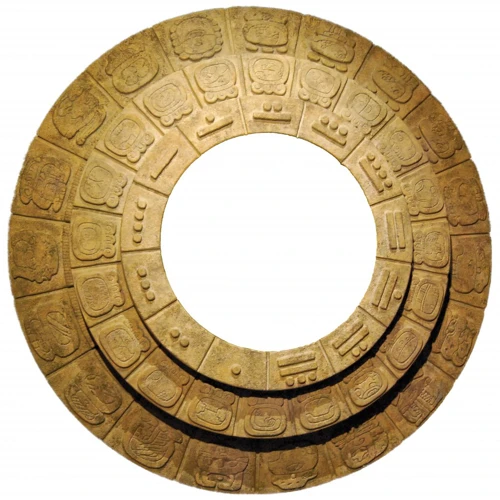
The Mayan calendar system was intricately intertwined with their astronomical observations, showcasing their deep understanding of the cosmos. There were several calendars in Mayan culture, each serving different purposes and aligning with specific celestial movements. The Long Count Calendar, for instance, was used to track larger cycles of time, such as the duration between significant events. It is this calendar that sparked interest in the myth of the Mayan doomsday prophecy. The Haab Calendar was a solar calendar consisting of 18 months, each with 20 days, plus an additional 5-day period called the Wayeb. This calendar aligned with agricultural activities and marked the changing of seasons. The Tzolk’in Calendar was a sacred and ritualistic calendar consisting of 260 days, composed of two separate cycles running in parallel. One cycle consisted of 13 numbers, while the other consisted of 20 day names or glyphs. The combination of the two cycles created a unique day, repeating itself only every 52 years. The synchronization between the Mayan calendars and astronomical events allowed the Mayans to predict celestial phenomena and organize important religious and agricultural activities with precision and significance. Continue reading to explore how Mayan structures were aligned with specific celestial bodies, further showcasing the intricate relationship between astronomy and the Mayan civilization.
The Long Count Calendar
The Long Count Calendar was a significant component of Mayan astronomy and timekeeping. It provided a method for tracking and recording historical and future dates with remarkable accuracy. The Long Count Calendar was a complex system based on a series of cycles and intervals.
The calendar consisted of five units of time: the kin (day), uinal (20 days), tun (360 days), katun (7,200 days), and baktun (144,000 days). Each unit represented a different level of time measurement, allowing the Mayans to establish a precise and comprehensive system. The Long Count Calendar was cyclical, with the baktun serving as the largest unit that reset to zero after reaching 13.
To represent dates, the Mayans used a numerical notation system that included both numerical glyphs and the bars-and-dots method. The numerical glyphs represented the different units of time, while the bars-and-dots method specifically indicated numbers within those units.
The Long Count Calendar was not only a practical timekeeping tool but also held deep cultural and religious significance for the Mayans. It allowed them to track important historical events, such as the beginnings and endings of reigns, as well as predict future astronomical events. It provided a framework for planning agricultural activities and marking significant celestial occurrences.
The end of a baktun in the Long Count Calendar, specifically the completion of the 13th baktun, gained significant attention in modern times. The date corresponding to the end of the 13th baktun, which fell on December 21, 2012, sparked speculation and interpretations of apocalyptic events. However, it is important to note that the Mayans did not associate this date with the end of the world, but rather as the completion of a cycle and the beginning of a new one.
Modern interpretations and research have uncovered the intricacies of the Long Count Calendar. Scholars and astronomers have used different correlation methods to align the Mayan calendar system with the Gregorian calendar, allowing for a more accurate understanding of historical events and calculations. Researchers have also explored the relationship between the Long Count Calendar and astronomical events, providing insights into the Mayans’ astronomical observations and their understanding of celestial cycles.
The Long Count Calendar remains a testament to the Mayans’ advanced knowledge of astronomy and mathematics. By studying this calendar system, we gain a deeper appreciation for the Mayan civilization and the remarkable precision with which they measured and recorded time.
To learn more about the zodiac signs that were significant to the Mayans and their correlation with celestial events, read our article on the shift to 13 zodiac constellations and the significance of Ophiuchus.
The Haab Calendar
The Haab Calendar was one of the calendars used by the ancient Mayans and was primarily based on the solar year. It consisted of 18 months, each with 20 days, resulting in a total of 360 days. Additionally, the Haab Calendar had a period of five extra “nameless” days known as the Wayeb. The combination of the 18 months and the Wayeb formed a year in the Haab Calendar.
The months in the Haab Calendar were known as uinals, and each month consisted of 20 days referred to as kins. The Mayans assigned specific names to each of the 18 months, such as Pop, Uo, Zip, Zotz, and many more. These names were derived from the Mayan language and often had connections to natural elements, animals, or celestial phenomena.
To numerically keep track of the days, the Mayans used a vigesimal system, meaning they based their counting on the number 20. Each day was assigned a number from one to 20, and the combination of the day number and the month name provided a unique identifier for each day of the Haab Calendar year.
The inclusion of the Wayeb period in the Haab Calendar is particularly interesting. These five extra days were considered to be a time of transition and potential danger. The Mayans believed that during Wayeb, the barrier between the mortal world and the supernatural realm dissolved, bringing chaos and ill fortune. As a result, they performed rituals and ceremonies to protect themselves and their communities during this time.
The Haab Calendar played a significant role in Mayan society. It served as a practical tool for agricultural purposes, helping farmers determine the appropriate time for planting and harvesting crops based on the seasons. Additionally, it was used for scheduling religious ceremonies, festivals, and other important events within the Mayan community.
It is important to note that the Haab Calendar was not the only calendar used by the Mayans. It worked in tandem with the Tzolk’in Calendar to create a more comprehensive system. Together, these calendars provided a more precise way to track time and align it with astronomical observations.
While the Haab Calendar is no longer in use, its legacy and influence can still be felt today. Scholars and astronomers continue to study and interpret its intricacies, deepening our understanding of the Mayan civilization and their remarkable astronomical knowledge.
Continue reading to explore the Tzolk’in Calendar, another fascinating calendar used by the Mayans, which focused on a different aspect of timekeeping and had its own unique characteristics.
The Tzolk’in Calendar
The Tzolk’in Calendar was an essential component of Mayan astronomy and timekeeping. This calendar, also known as the Sacred Round or the Divine Calendar, consisted of 260 days and served as a spiritual and ceremonial guide for the Mayans. Unlike the solar-based calendars used in many other civilizations, the Tzolk’in Calendar was based on the combination of two separate cycles: a cycle of 13 numbers and a cycle of 20 day names.
The cycle of 13 numbers, known as trecenas, represented the vertical aspect of the calendar. Each number within the cycle was associated with a specific deity, representing different energies and qualities. The combination of the 13 numbers with the 20 day names resulted in a unique combination for each date of the Tzolk’in Calendar. This combination formed a sacred 260-day cycle, with no repeated combinations for over 18,000 years.
The 20 day names, referred to as uinals, represented the horizontal aspect of the calendar. These day names held significant symbolic meaning within Mayan culture and were associated with mythical figures, animals, elements of nature, and agricultural activities. For example, Imix represented the crocodile or water element, while Ik represented the wind or air element.
The Tzolk’in Calendar was intertwined with the Mayan belief system and was considered a sacred guide for spiritual and ritual practices. It was believed that each combination of number and day name possessed unique energy and influenced the characteristics and destiny of individuals born on that specific day. The calendar was consulted for auspicious dates for various activities, such as marriages, ceremonies, and important events. Mayans relied on the guidance of the Tzolk’in Calendar to make decisions, understand personal traits, and connect with the spiritual realm.
Interestingly, the Tzolk’in Calendar also had a connection to astronomy. Some researchers believe that the 260-day cycle of the calendar may have been based on the approximate length of human gestation or the orbital period of Venus. The Mayans had a great reverence for Venus, associating it with important deities and celestial events. However, the exact astronomical significance of the Tzolk’in Calendar remains a subject of ongoing research and speculation.
The Tzolk’in Calendar continues to be influential in Mayan culture today, particularly among indigenous communities in Mesoamerica. It is celebrated and observed as a cultural heritage, with rituals and ceremonies conducted to honor the ancient wisdom embedded within this sacred calendar system.
To further explore the Mayans’ deep connection to astrology and their beliefs in how celestial events influenced human destiny, check out our article on Cancer and Capricorn compatibility. This intriguing aspect of Mayan culture sheds light on how they used astronomy to understand and interpret the personalities and relationships of individuals based on astrological signs.
Astronomy and Ancient Mayan Structures
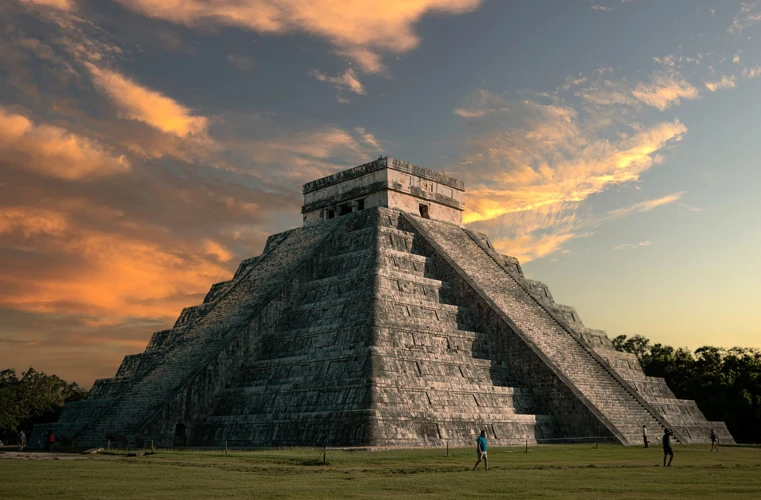
Astronomy played a significant role in the construction of ancient Mayan structures, demonstrating the sophisticated knowledge and understanding of celestial movements by this ancient civilization. The Mayans intentionally aligned their pyramids and temples with specific celestial bodies, showcasing their meticulous observations and calculations. Some notable examples include the alignment of the Temple of Kukulkan at Chichen Itza with the spring and autumn equinoxes, where the play of light and shadow creates the illusion of a descending serpent. Another remarkable structure is the Caracol Observatory, which was strategically positioned to observe celestial events such as the movements of Venus. These alignments not only highlight the Mayans’ astronomical prowess but also served religious, cultural, and agricultural purposes. Through these structures, the Mayans communicated their deep connection with the cosmos and reflected their belief in the influence of celestial entities on their lives.
Pyramids aligned with Celestial Bodies
Pyramids aligned with Celestial Bodies: One of the most fascinating aspects of Mayan astronomy is their precise alignment of pyramids and temples with celestial bodies. The Mayans intentionally constructed these architectural marvels to align with specific astronomical events, showcasing their advanced knowledge of the cosmos. Let’s explore some notable examples of pyramids that were aligned with celestial bodies:
- The Temple of Kukulkan at Chichen Itza: This iconic pyramid is aligned with meticulous precision. During the spring and autumn equinoxes, a remarkable phenomenon occurs. As the sun sets, shadows cast upon the pyramid create the illusion of a serpent slithering down the structure’s steps. It is a breathtaking sight that symbolizes the Mayan deity Kukulkan, also known as the feathered serpent, descending from the heavens. The alignment of this pyramid highlights the Mayans’ understanding of solar movements and their significant role in Mayan mythology and religious ceremonies.
- The Temple of the Inscriptions at Palenque: This pyramid is aligned in such a way that on the day of the winter solstice, the sun shines directly into the temple’s central chamber, illuminating a stone sarcophagus. This alignment signifies the rebirth of the king represented by the deceased ruler entombed inside. It showcases the Mayans’ belief in the cyclical nature of life, death, and renewal, mirrored in the movements of celestial bodies.
- The Caracol observatory at Chichen Itza: Although not a pyramid, the Caracol is an ancient observatory built by the Mayans. It features a circular tower with narrow slits and windows that align with specific astronomical events, such as the movements of Venus and other important celestial bodies. The Mayans used the Caracol to make precise observations, furthering their understanding of planetary movements and their connection to Mayan cosmology.
These are just a few examples of how the Mayans incorporated their knowledge of astronomy into their architectural designs. The precise alignment of these structures with celestial bodies not only demonstrated their scientific prowess but also served religious, ceremonial, and practical purposes. The Mayans believed that by aligning their pyramids with the heavens, they could access the power and energy of the celestial realms. These alignments were essential for religious rituals, marking important calendar events, and understanding the cosmic forces that influenced their daily lives.
The construction and alignment of pyramids with celestial bodies stand as a testament to the Mayan civilization’s deep connection with the cosmos and their unparalleled expertise in astronomy. Through these architectural marvels, the Mayans left behind a lasting legacy that continues to astonish and inspire scientists, archaeologists, and visitors alike.
El Caracol Observatory
The El Caracol Observatory is an impressive ancient Mayan structure that showcases the advanced astronomical knowledge of this civilization. Located in the archaeological site of Chichen Itza, in present-day Mexico, El Caracol is an astronomical observatory that played a crucial role in observing and studying celestial phenomena.
The name “El Caracol” translates to “The Snail,” which is fitting considering the spiral staircase that wraps around the central tower of the observatory. This unique architectural feature indicates that the Mayans were not only interested in studying the celestial bodies but also in understanding the concept of time and the cyclical nature of the universe.
The El Caracol Observatory was strategically designed with specific features aligned with astronomical events. The observatory has several narrow, vertical openings, known as loopholes or windows, in its walls. These loopholes were positioned to align with specific celestial bodies at particular times of the year. By observing the movement of the stars and planets through these openings, the Mayans could track various astronomical events, including equinoxes, solstices, and the positions of certain stars.
One of the most significant alignments observed from El Caracol is the alignment with the planet Venus. The Mayans had a great fascination with Venus and viewed it as a powerful entity that influenced their lives. The alignment of the observatory allowed them to track the movements of Venus and make predictions about its appearances as both a morning star and an evening star. This knowledge of Venus’s movements was crucial in determining favorable times for religious ceremonies, agricultural activities, and even warfare.
The Mayans’ ability to construct such precise astronomical observatories like El Caracol is a testament to their advanced understanding of celestial phenomena. The observatory not only served practical purposes but also held deep religious and cultural significance. It was a place where the Mayan priests and astronomers would gather to make important observations, conduct rituals, and make predictions based on their findings.
Today, El Caracol remains one of the most well-preserved Mayan observatories, allowing visitors to experience the architectural brilliance and gain insights into how the Mayans perceived and studied the cosmos. Exploring the El Caracol Observatory offers a glimpse into the intricate knowledge and scientific prowess of the Mayan civilization, highlighting their dedication to understanding the movements and patterns of the celestial bodies that surrounded them.
Deciphering Mayan Symbols and Artifacts
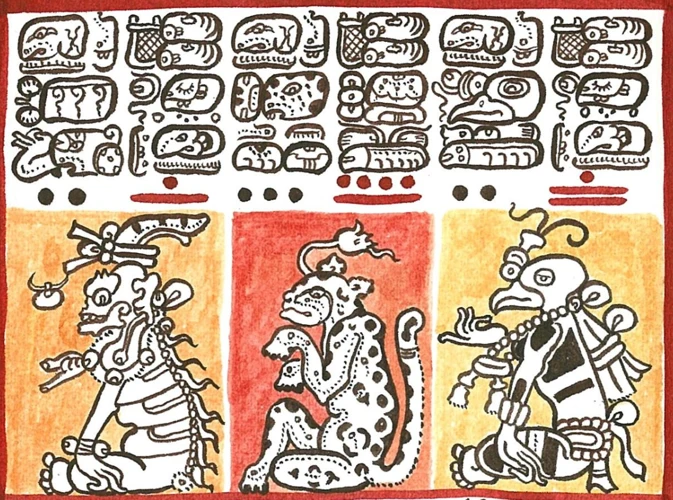
Deciphering Mayan symbols and artifacts is a fascinating endeavor that offers insights into the astronomical knowledge of this ancient civilization. Mayan art and artifacts often depict intricate star maps and constellations, showcasing the Mayans’ deep understanding of the night sky. These depictions not only served artistic purposes but also communicated celestial events and their meanings. Through careful study and analysis, archaeologists and researchers have been able to identify specific constellations and celestial bodies depicted in Mayan artwork. The Mayans also believed in the astrological significance of certain constellations and celestial events, associating them with human behavior and destiny. Understanding these symbols and their celestial connections provides a window into the broader belief systems and cosmology of the Mayans. By studying Mayan symbols and artifacts, we can unravel the intricate relationship between the Mayans, the cosmos, and their rich astronomical knowledge.
Star Maps and Constellations
Star maps and constellations held great significance in Mayan culture and were intricately intertwined with their astronomical knowledge. Mayan art often depicted detailed star maps, showcasing their understanding of the night sky and the celestial bodies that inhabited it.
The Mayans recognized various constellations and believed that they represented mythological figures or important deities. These constellations played a crucial role in Mayan astrology and were believed to have a direct influence on the lives and destinies of individuals. For example, the Pleiades cluster, known as the “Seven Sisters,” was associated with the rain god and the agricultural cycles of the Mayans. Its appearance in the sky marked the beginning of the rainy season, which was vital for the success of their crops.
Different Mayan cities and regions had their own interpretations of constellations and star maps, resulting in variations in their depiction. This suggests that the Mayans had a comprehensive understanding of the night sky and recognized the changes and variations in celestial patterns across different locations.
Mayan star maps not only depicted constellations but also showed the paths and movements of specific celestial bodies. These detailed maps allowed the Mayans to navigate the night sky, predict celestial events, and calculate the passage of time. They could precisely identify the locations of planets, stars, and other significant celestial objects.
The knowledge embedded in these star maps and constellations was not just for astronomical purposes but also had cultural and spiritual significance. Mayan art and artifacts featuring star maps were often found in important ceremonial and religious contexts. The understanding of celestial bodies and their movements played a pivotal role in determining auspicious dates for ceremonies, religious festivals, and other important events.
Today, archaeologists and astronomers continue to study Mayan star maps and constellations to decipher their intricate meanings and gain further insights into the Mayans’ astronomical knowledge and cultural beliefs. This ongoing research helps us appreciate the depth of their understanding and the significance they attributed to the night sky and its celestial wonders.
As we explore the astronomical knowledge of the Mayans, it is important to recognize the fascinating connection between their interpretation of star maps and constellations and their cultural and spiritual beliefs. Mayan culture, mythology, and astrology were closely intertwined with their observations of the night sky, presenting a holistic understanding of the cosmos and its influence on their daily lives and rituals.
Astrological Significance
Astrological significance held great importance in Mayan culture, as the Mayans believed that celestial events and positions influenced the lives of individuals and the destiny of the entire civilization. Mayan astrology was not limited to the twelve zodiac signs familiar in modern astrology, but encompassed a more complex system based on the interplay of celestial bodies and various calendar systems. The Mayans regarded astrological readings as a means of gaining insight into one’s character traits, compatibility with others, and even as a guide for making important life decisions.
Mayan astrologers studied the positions of planets, the moon, and other celestial bodies to interpret their impact on different aspects of life. They assigned specific characteristics and associations to each celestial body, including both positive and negative qualities. For example, Venus was associated with fertility, prosperity, and beauty, while Mars was linked to conflict and warfare. By analyzing the positions of these celestial bodies at the time of a person’s birth or during specific events, Mayan astrologers believed they could gain insight into the individual’s personality traits and potential life experiences.
In Mayan astrology, each day had its own specific energy and significance. This was determined by the combination of the day sign from the Tzolk’in Calendar and the number from the Long Count Calendar. The Tzolk’in Calendar consisted of 20 day signs, such as Imix (Crocodile), Ik (Wind), and Ahau (Sun), each with its own unique qualities. The Long Count Calendar provided a numerical value that further defined the characteristics associated with that particular day. By combining these two elements, Mayan astrologers were able to create intricate astrological readings that provided guidance and understanding.
Mayan astrology also played a role in determining compatibility between individuals. Just as in modern astrology, the Mayans believed that certain day signs and combinations were more compatible than others, and that individuals born under these signs would have harmonious relationships. For example, individuals born under the sign of Muluc (Water) were believed to have a strong bond with those born under the sign of Ix (Jaguar), sharing a deep emotional connection and understanding.
The astrological significance extended beyond personal readings and compatibility. Mayan astrologers also used celestial events to predict and interpret larger societal changes. For instance, the appearance of certain planets or the alignment of specific constellations were believed to foretell significant events, such as the rise and fall of political powers or changes in agricultural cycles.
While Mayan astrology shares certain similarities with modern astrology, it is important to note that they are distinct systems with different interpretations and methods. Mayan astrology focused on the unique combination of day signs, numbers, and celestial positions specific to their culture, providing a glimpse into the Mayans’ deep connection to the cosmos and their belief in the influence of celestial forces on human lives.
Exploring Mayan astrological significance not only gives us insight into their belief system but also showcases the sophistication and intricacies of Mayan culture. By seeking guidance from the celestial bodies above, the Mayans sought to understand themselves, their place in the world, and the forces that shaped their lives. It is a testament to their profound connection with the cosmos and their ongoing quest for knowledge and understanding.
Mayan Beliefs and the Cosmos
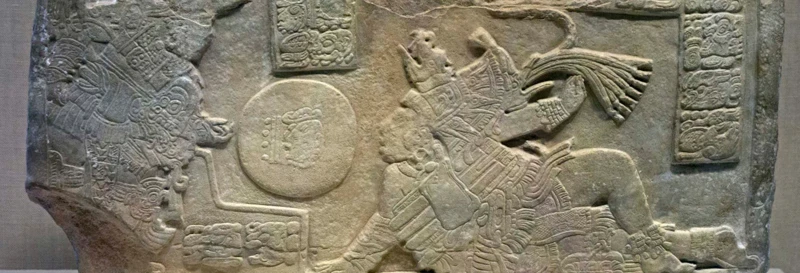
Mayan beliefs surrounding the cosmos were deeply rooted in their religious and spiritual practices. The Mayans believed that the celestial bodies held great power and influenced the lives of both individuals and the community as a whole. They believed that the cosmos was intricately connected to the earthly realm and that the gods and ancestral spirits resided in the heavens.
Astronomical Symbolism: The Mayans incorporated their astronomical knowledge into their artwork, architecture, and rituals. They represented celestial bodies such as the Sun, Moon, and stars in their artwork, and these symbols held profound spiritual significance. The Mayans believed that these symbols served as gateways through which they could communicate with the deities and seek their guidance.
Cosmological Worldview: The Mayan cosmological worldview was centered around the concept of the “three worlds” – the Upperworld, Middleworld, and Underworld. Each world was associated with specific celestial bodies and had its own set of deities and divine beings. The Upperworld was related to the Sun, Moon, and stars and was considered the realm of the gods. The Middleworld was the earthly realm where humans resided, and the Underworld was associated with death and the realm of ancestors.
Sacred Rituals and Astronomy: Astronomy played a crucial role in Mayan rituals and ceremonies. The Mayans believed that by aligning their rituals with celestial events, they could establish a strong connection with the gods and harness their power. For example, during the solstices and equinoxes, the Mayans conducted elaborate ceremonies to honor the changing seasons and ensure successful agricultural harvests.
Astrological Significance: The Mayans also placed great importance on astrology and believed that individual destinies were influenced by the positions of celestial bodies at the time of birth. They believed that each person had a specific day sign and a unique combination of astrological elements that influenced their personality traits and life path. Astrologers and priests played a significant role in interpreting these celestial alignments and providing guidance to individuals and the community.
The Sacred Ball Game and the Cosmos: The Mayan ball game, known as “pok-a-tok,” held cosmic significance for the Mayans. It was not just a physical sport but was deeply connected to their cosmological beliefs. The ball court was often aligned with significant celestial landmarks, symbolizing the cosmic battle between the forces of light and darkness. The outcome of the game was believed to determine the harmony or discord between the earthly realm and the celestial realms.
The Mayan beliefs and their understanding of the cosmos influenced every aspect of their lives, from religious practices to social organization and agricultural activities. The deep connection they felt with the celestial bodies shaped their worldview and provided a framework for understanding their place in the universe. Today, we continue to study and appreciate the Mayans’ rich astronomical knowledge and cultural beliefs, gaining a deeper appreciation for the intricate relationship they had with the cosmos.
Modern Interpretations and Discoveries
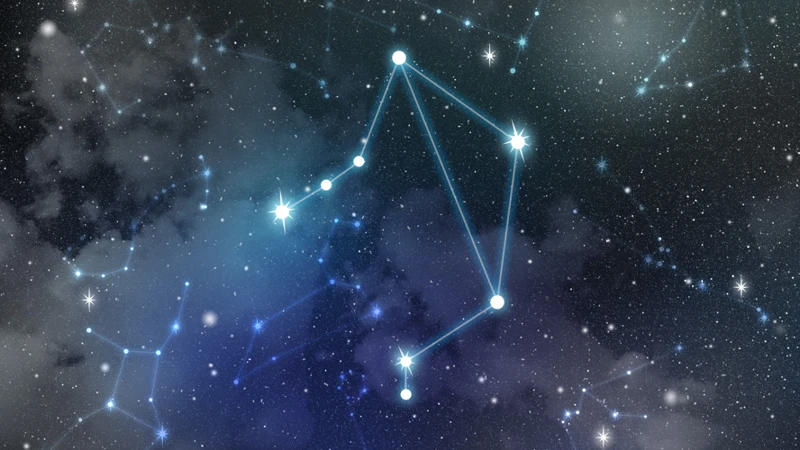
Modern interpretations and discoveries have greatly contributed to our understanding of Mayan astronomy and shed new light on the intricate knowledge of this ancient civilization. Through archaeological excavations and advancements in scientific research, we are gaining deeper insights into the ways in which the Mayans observed and interpreted celestial phenomena.
One significant area of modern interpretation relates to the Mayan calendar system. Scholars have unraveled the complexities of the Long Count Calendar, which is renowned for its cyclical nature and its ability to accurately record long periods of time. Modern researchers have identified correlations between the Long Count Calendar and astronomical events, such as the alignment of specific celestial bodies or the occurrence of solstices and equinoxes. This correlation not only emphasizes the Mayans’ intricate observations but also suggests that they had a deep understanding of celestial cycles and how they influenced their everyday lives.
Another fascinating discovery in recent years has been the identification of celestial alignments in Mayan architectural structures. Through detailed surveys and measurements, archaeoastronomers have uncovered instances where Mayan pyramids and temples were precisely aligned with the movements of the sun, moon, and planets. For example, the El Castillo pyramid at Chichen Itza was found to align with both the equinoxes and the solstices, where the setting sun creates the illusion of a serpent slithering down the steps. These alignments highlight the Mayans’ ability to integrate their astronomical knowledge into their architectural designs, creating structures that served both practical and symbolic purposes within their society.
Advancements in technology have also allowed researchers to study Mayan artifacts in greater detail. Through the use of multispectral imaging and 3D modeling, ancient Mayan pottery, murals, and stone carvings have been analyzed to reveal intricate depictions of celestial phenomena. These depictions have provided valuable insights into Mayan star maps, constellations, and their understanding of astronomical events. Scholars have been able to decipher patterns and symbols, identifying specific constellations and celestial objects that were important to the Mayans.
Modern interpretations of Mayan astronomy have also led to a deeper understanding of the Mayans’ astrological beliefs. While Mayan astrology differs from the Western zodiac system, researchers have drawn connections between the positions of celestial bodies and their influence on personality traits and life events. This interdisciplinary approach has allowed for a more comprehensive understanding of how Mayan astronomy intersected with their spiritual and cultural practices.
Ongoing research and discoveries continue to contribute to our knowledge of Mayan astronomy. Advances in fields like archaeoastronomy, anthropology, and astrophysics enable scholars to analyze Mayan sky observations with greater precision and accuracy. New findings provide avenues for further exploration and interpretation, uncovering hidden facets of the Mayans’ astronomical knowledge that were previously unknown.
Modern interpretations and discoveries have significantly enriched our understanding of Mayan astronomy. Through archaeological excavations, technological advancements, and the collaboration of various disciplines, we continue to uncover the complexities and ingenuity of the Mayans’ astronomical knowledge. The interplay between their observations of celestial phenomena and its integration into their calendars, structures, and belief systems showcases the Mayans’ profound connection with the cosmos. By delving deeper into these modern interpretations and discoveries, we gain a greater appreciation for the intellectual achievements of the Mayans and the timeless wisdom they left behind.
Conclusion
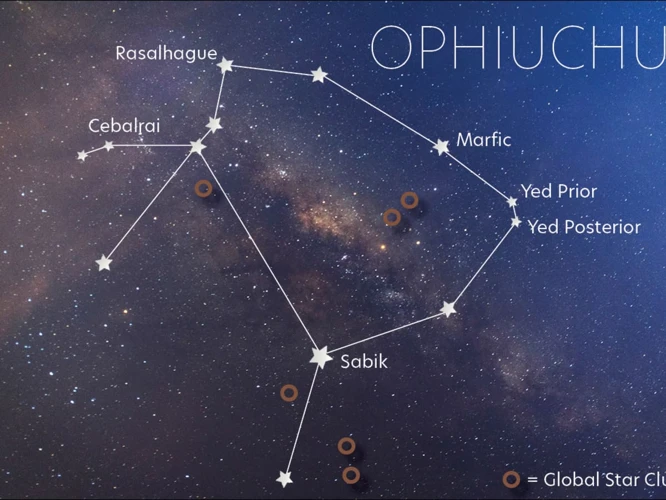
In conclusion, the astronomical knowledge of the Mayans was a testament to their advanced understanding of the cosmos. Through their meticulous observations and calculations, the Mayans developed a sophisticated system of astronomy that encompassed lunar cycles, planetary movements, and solar observations. Their astronomical knowledge served as the foundation for the development of intricate calendars, the construction of ancient structures aligned with celestial bodies, and the creation of intricate symbols and artifacts that held hidden meanings.
The Mayans’ intimate connection with the stars and planets is reflected in their calendars, such as the Long Count Calendar, the Haab Calendar, and the Tzolk’in Calendar. These calendars not only aligned with celestial events but also played a crucial role in organizing religious ceremonies, agricultural practices, and societal events. The Mayans believed that the movements of celestial bodies directly influenced their lives, and their calendars served as a tool to navigate these celestial influences.
The alignment of Mayan pyramids and temples with specific celestial bodies further demonstrates the Mayans’ advanced astronomical knowledge. These structures were not only impressive architectural marvels but also acted as sacred spaces in which the Mayans could connect with the cosmos. From the alignment of the Temple of Kukulkan at Chichen Itza with the equinoxes to the El Caracol Observatory’s purposeful positioning to observe celestial events, the Mayans showcased their deep understanding of astronomy in their architectural designs.
Deciphering Mayan symbols and artifacts also provides valuable insights into their astronomical knowledge. Star maps and depictions of constellations in Mayan art highlight their understanding of the night sky. Astrology held significance in Mayan culture, with celestial events and constellations believed to shape human destiny and behavior. These symbols and artifacts give us a glimpse into the Mayans’ unique perspective on the cosmos and their place within it.
The Mayans’ intricate beliefs and practices surrounding the cosmos shaped their worldview and had a profound impact on their daily lives. The connection between astronomy, agriculture, religion, and societal events was deeply ingrained in their culture. Today, the study of Mayan astronomy continues to evolve, with modern interpretations and discoveries providing us with further insights into the complexities of this ancient civilization’s astronomical knowledge and practices.
The astronomical knowledge of the Mayans stands as a testament to their intellectual and cultural achievements. Their sophisticated understanding of the cosmos, as seen through their calendars, structures, symbols, and beliefs, is a testament to their curiosity, intellect, and deep connection with the natural world. By unraveling the mysteries of Mayan astronomy, we gain a greater understanding of this ancient civilization’s rich heritage and their place in the vast tapestry of human achievement.
Frequently Asked Questions

What instruments did the Mayans use for astronomical observations?
The Mayans primarily relied on naked-eye observations to study the night sky. They did not have advanced instruments like telescopes. Instead, they used their keen eyesight and built structures such as observatories to aid in their observations.
How did the Mayans predict celestial events?
By carefully tracking and recording celestial movements over many generations, the Mayans were able to develop calendars and mathematical models that allowed them to predict celestial events with remarkable accuracy. Their knowledge of the cycles of the moon, planets, and the Sun played a crucial role in this prediction process.
What significance did the lunar cycle hold for the Mayans?
The lunar cycle held great significance for the Mayans. They associated different phases of the moon with agricultural activities, religious rituals, and even human behavior. The moon’s waxing and waning were believed to influence growth, fertility, and the timing of important events.
Why were the Mayan pyramids aligned with celestial bodies?
The alignment of Mayan pyramids and temples with celestial bodies served multiple purposes. It showcased the Mayans’ profound astronomical knowledge and played a role in their religious and spiritual practices. The alignment also allowed them to mark important celestial events such as solstices and equinoxes.
How were the Mayan calendars used in their society?
The Mayan calendars were integral to the Mayan society. They were used to organize religious festivals, plan agricultural activities, and predict celestial events. The calendars provided a framework for their daily lives and held cultural, spiritual, and practical importance.
What was the purpose of the Long Count Calendar?
The Long Count Calendar was a system developed by the Mayans to track longer periods of time. It provided a way to record historical events, and it was also associated with the Mayan creation myth and the cyclical nature of time.
What was the role of astrology in Mayan culture?
Astrology played a significant role in Mayan culture. Certain constellations and celestial events were believed to influence human behavior and destiny. Mayan astrologers interpreted these influences and provided guidance on various aspects of life, such as relationship compatibility and career choices.
What do Mayan symbols and artifacts reveal about their astronomical knowledge?
Mayan symbols and artifacts, including pottery, stone carvings, and murals, often depict celestial bodies, star maps, and zodiac imagery. These depictions indicate the Mayans’ deep understanding of the night sky and its significance in their society. They also suggest the importance of celestial events in their religious and cultural practices.
What modern discoveries have furthered our understanding of Mayan astronomy?
Modern discoveries, such as archaeological excavations and scientific research, have unearthed valuable evidence that helps us better understand Mayan astronomy. These discoveries include deciphering Mayan inscriptions, utilizing advanced imaging techniques, and reconstructing ancient observatories, all of which contribute to our ongoing exploration of this ancient civilization’s astronomical knowledge.
How does the Mayans’ astronomical knowledge compare to modern astronomy?
The Mayans’ astronomical knowledge was remarkably advanced for their time, considering they made accurate predictions of celestial events without the use of modern technology. While modern astronomy has expanded our understanding of the universe, the Mayans’ observations and mathematical calculations still showcase their intricate understanding of the night sky and celestial movements.
References
Frequently Asked Questions

1. How did the Mayans observe astronomical events without modern technology?
The Mayans were avid skywatchers who relied on their naked eye observations to track celestial movements. They carefully observed the positions of the sun, moon, planets, and stars over long periods of time, documenting their findings through intricate calendars and complex astronomical symbols.
2. What were the main astronomical observations made by the Mayans?
The Mayans made significant observations of the lunar cycle, planetary movements, and solar observations. They meticulously tracked the phases of the moon, studied the paths of planets across the sky, and closely watched the movements of the sun to determine solstices and equinoxes.
3. How did the Mayan calendar incorporate astronomy?
The Mayan calendar was closely tied to astronomical events. They developed several calendars, including the Long Count Calendar, the Haab Calendar, and the Tzolk’in Calendar, which all took into account celestial cycles and helped the Mayans organize agricultural activities, religious ceremonies, and societal events.
4. Were Mayan structures aligned with celestial bodies?
Yes, Mayan pyramids and other structures were often meticulously aligned with celestial bodies. The Mayans believed that these alignments had significant symbolic and religious meanings, and they used them as markers for important astronomical events and ceremonies.
5. What was the purpose of the El Caracol Observatory?
The El Caracol Observatory was a Mayan structure specifically designed to observe astronomical phenomena. Its unique round shape and carefully placed windows allowed the Mayans to track the movements of the stars, planets, and other celestial bodies with great accuracy.
6. How did the Mayans depict star maps and constellations?
The Mayans incorporated star maps and constellations into their art and symbolism. They used intricate symbols and patterns to represent specific stars, clusters, and constellations, often depicting them alongside their deities and important mythological figures.
7. Did the Mayans believe in astrology?
Yes, the Mayans believed that astronomical events and celestial bodies had a direct impact on human lives. They practiced astrology and used it for divination and predicting future events. Mayan astrologers would analyze celestial positions and movements to make predictions about individuals and society as a whole.
In recent years, researchers have made significant progress in deciphering Mayan astronomical symbols and calendars. Advances in technology and archaeological discoveries have shed new light on the sophisticated astronomical knowledge of the Mayans, leading to a deeper understanding of their celestial observations.
9. How does Mayan astronomy compare to other ancient civilizations?
Mayan astronomy stands out for its precision and complexity. The Mayans developed an advanced understanding of celestial phenomena, rivaling the astronomical knowledge of other ancient civilizations such as the Egyptians, Greeks, and Chinese. Their astronomical achievements continue to impress scientists and historians today.
10. What is the significance of Mayan astronomical knowledge in modern times?
The Mayan astronomical knowledge provides us with valuable insights into their culture, religious beliefs, and their relationship with the cosmos. It serves as a reminder of the remarkable intellectual achievements of ancient civilizations and how astronomy has played a vital role in shaping human history.
References
- They Were the Ancient Masters of Mathematics …
- Maya Astronomy and Mathematics—Yesterday and Today
- The Calendar System | Living Maya Time

